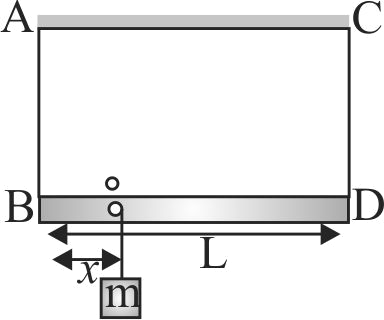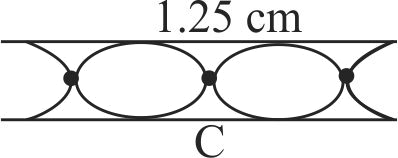354882
A massless rod is suspended by two identical strings \(AB\) and \(CD\) of equal length. A block of mass \(m\) is suspended from point \(O\) such that \(BO\) is equal to ' \(x\) 'Further, it is observed that the frequency of \(1^{\text {st }}\) harmonic (fundamental frequency) in \(AB\) is equal to \(2^{\text {nd }}\) harmonic frequency in \(CD\). Then, length of \(BO\) is
354882
A massless rod is suspended by two identical strings \(AB\) and \(CD\) of equal length. A block of mass \(m\) is suspended from point \(O\) such that \(BO\) is equal to ' \(x\) 'Further, it is observed that the frequency of \(1^{\text {st }}\) harmonic (fundamental frequency) in \(AB\) is equal to \(2^{\text {nd }}\) harmonic frequency in \(CD\). Then, length of \(BO\) is
354882
A massless rod is suspended by two identical strings \(AB\) and \(CD\) of equal length. A block of mass \(m\) is suspended from point \(O\) such that \(BO\) is equal to ' \(x\) 'Further, it is observed that the frequency of \(1^{\text {st }}\) harmonic (fundamental frequency) in \(AB\) is equal to \(2^{\text {nd }}\) harmonic frequency in \(CD\). Then, length of \(BO\) is
354882
A massless rod is suspended by two identical strings \(AB\) and \(CD\) of equal length. A block of mass \(m\) is suspended from point \(O\) such that \(BO\) is equal to ' \(x\) 'Further, it is observed that the frequency of \(1^{\text {st }}\) harmonic (fundamental frequency) in \(AB\) is equal to \(2^{\text {nd }}\) harmonic frequency in \(CD\). Then, length of \(BO\) is
